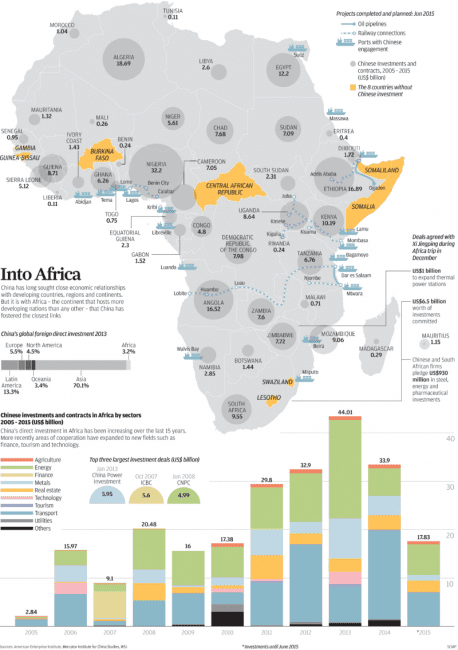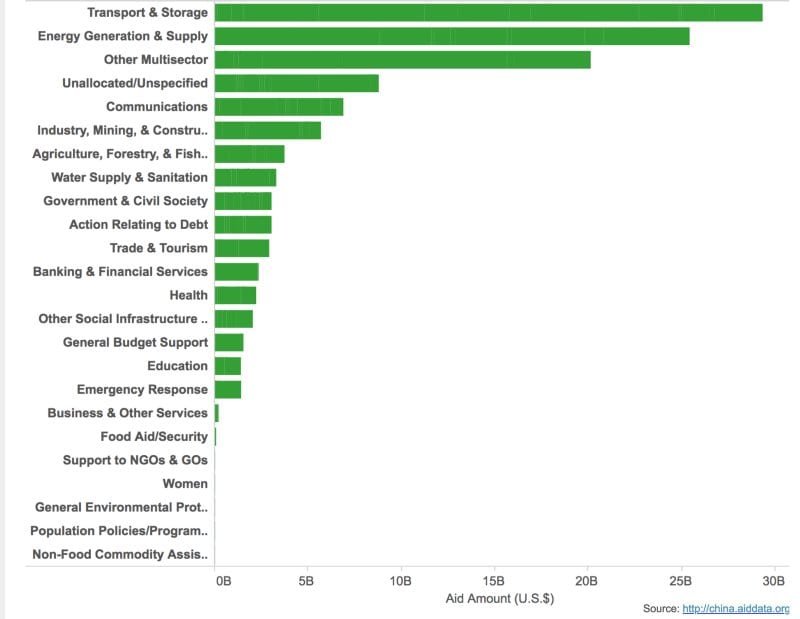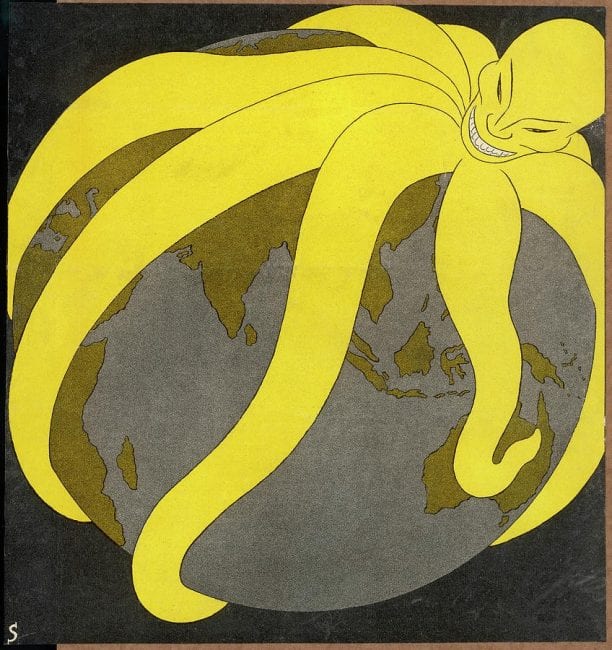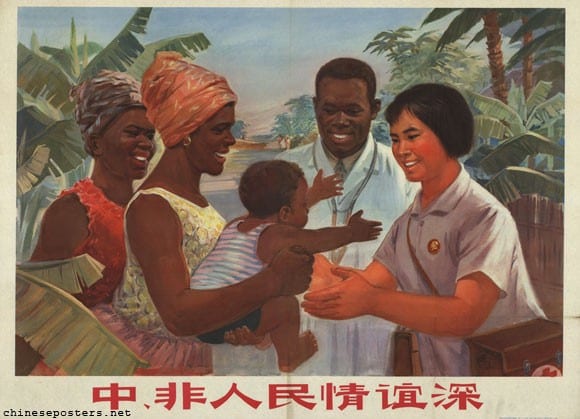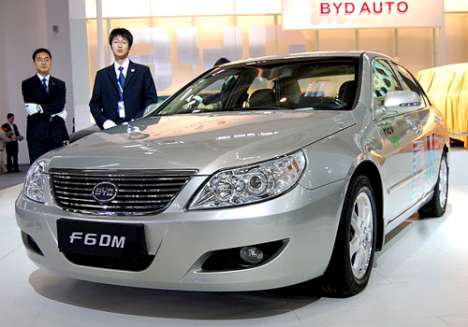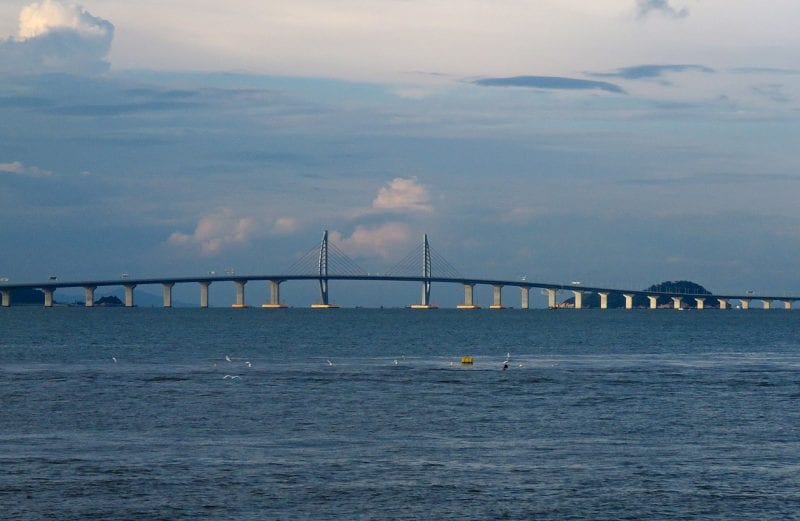
Impressive engineering accomplishments are marking the resurgence of China as a prominent civilization. The Hong Kong–Zhuhai–Macau Bridge (HZMB), officially the Hong Kong–Zhuhai–Macao Bridge, is a 55-kilometre (34 mi) bridge–tunnel system consisting of a series of three cable-stayed bridges, an undersea tunnel, and four artificial islands. It is both the longest sea crossing and the longest fixed link on earth. The HZMB spans the Lingding and Jiuzhou channels, connecting Hong Kong, Macau, and Zhuhai—three major cities on the Pearl River Delta. (Wikipedia)
China’s economic philosophy is a far cry from that of the west.
[dropcap]T[/dropcap]he west consistently seeks to undermine the interests of their partners, be it for trade or political agreements; be it partners from the west, their smaller and weaker brothers; or from the east; or from the south – there is always an element of exploitation, of “one-upmanship”, of outdoing a partner, of domination. Equality and fairness are unknown by the west.
Or, when the concept was once known, at least by some countries and some people, it has been erased by indoctrinated neoliberal thinking – egocentricity, “me first”, and the sheer, all-permeating doctrine of “maximizing profits”; short-term thinking, instant gratification – or more extreme, making a killing today for a gamble or deal that takes place tomorrow. Futures trading – the epitome of manipulating economic values. Only in the capitalist world.
This has become a key feature of western commerce and trading. It’s manipulation and exploitation over ethics; it’s Profits Über Alles! – Doesn’t it sound like fascism? – Well it is. And if the partner doesn’t fall for the ruse, coercion becomes the name of the game – and if that doesn’t work the western military move in with bombs and tanks, seeking regime change – destroying the very country the west wants to dominate. That’s western brutal economics – full hegemony. No sharing.
China’s approach is quite different. It’s one of sharing, of participating, of mutual benefits. China invests trillions of dollars equivalent in developing countries – Asia, especially India and now also Pakistan, Africa, South America, largely for infrastructure projects, as well as mining of natural resources. Unlike the gains from western investments, the benefits of China’s investments are shared. China’s investment and mining concessions are not coerced, but fairly negotiated. China’s investment relationship with a partner country remains peaceful and is not ‘invasive’ and abusive, as are most of those of the west – which uses threats and guns to get what they want.
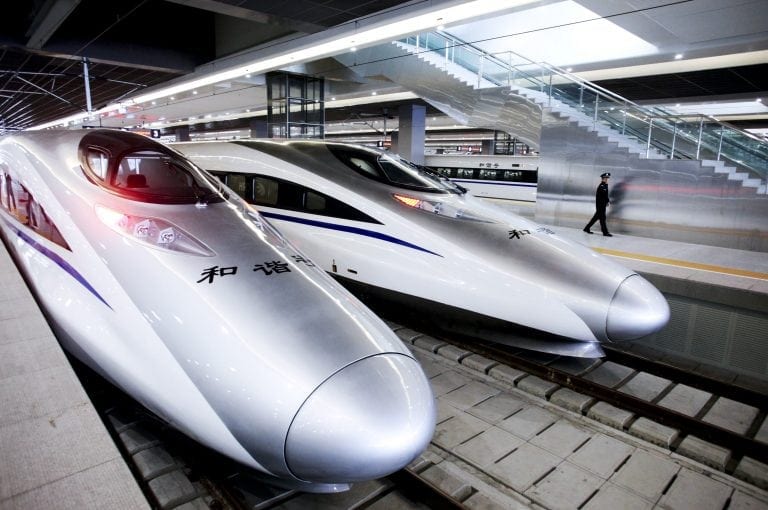
A new high-speed inter-city train that connects Shanghai and Hangzhou in Shanghai, China in 45 minutes, cutting the trip's prior duration by 2/3. The rail service was inaugurated in 2010. While China's infrastucture makes rapid advances in all areas, the West is witnessing growint stagnation and in some nations something approaching paralysis. The US infrastructure, once the envy of the world, is now amomg the most neglected.
[dropcap]O[/dropcap]f course, the west complains about Chinese investments, lying how abusive they are, when in reality the west is upset about Chinese competition in Africa and South America – Continents that are still considered part of the western domain, as they were colonized for about a thousand years by western powers and empires – and as of today, African and Latin-American countries are neo-colonized, no longer (for now) with brute military force, but with even more ferocious financial strangulation, through sanctions, boycotts and embargos; all highly illegal by any international standards. But there aren’t any international laws that are upheld. International courts and judges are coerced to obey Washington’s dictates, or else… literally “or else”; and these are serious threats.
Take the case of West and Central Africa, former French colonies. The French West African zone includes eight countries: Benin, Burkina Faso, Guinea Bissau, Ivory Coast, Mali, Niger, Senegal, Togo; and the French Central African area comprises six countries – Cameroon, the Central African Republic, Chad, Republic of the Congo, Equatorial Guinea and Gabon. All 14 countries have a common currency, the CFA franc (CFA = Communauté financière africaine – African Financial Community).
The west consistently seeks to undermine the interests of their partners, be it for trade or political agreements; be it partners from the west, their smaller and weaker brothers; or from the east; or from the south – there is always an element of exploitation, of “one-upmanship”, of outdoing a partner, of domination. Equality and fairness are unknown by the west.
They are two separate currencies, though always at parity and therefore interchangeable. The Western and Central African monetary union have separate central banks, the Banque Centrale des États de l’Afrique de l’Ouest, BCEAO, headquartered in Dakar, Senegal; and the Banque des États de l’Afrique Centrale, BEAC, in Yaoundé, Cameroun. Both currencies are guaranteed by the French treasury. This means in fact, that the economy of these 14 countries not only depends on France, but setting the value of the currency (at present one € = 655 CFA francs) is entirely the prerogative of the Banque de France (French Central Bank). This ultra-complicated setup between the two groups of former and new French colonies is not only a matter of French accounting, but foremost a means to confuse and distract the mostly innocent observer from a flagrant abusive reality.

Map eloquently illustrates how the Europeans literally took over the whole African continent, distributing according to relative power and precedence their zones of influence.
With the French control over the West- and Central African currencies, the foreign trading capacity of these countries is reduced to what France will allow. France has a de facto monopoly on these countries’ production. Should France stop buying their “former-new” colonies goods, the countries go broke, as they have been unable to develop alternative markets under the French yoke. Thus, they are always at the mercy of France, the IMF, World Bank and the African Development Bank. – From labor slaves up to the early 1960s, they have become debt slaves of the neoliberal age.
In addition, to back this French Treasury guarantee, 85% of the countries’ foreign exchange reserves are blocked by the French Central Bank and may only be used by the respective countries against specific permission – and – as a loan. – Imagine! – The “former” French colonies have to borrow their own money from the French Central Bank. Similar debt enslaving is going on in former British and Portuguese colonies, though, none of them is as abjectly abusive as are the French.
Big wonder that Chinese investors are highly welcome in Africa. And knowing western manipulating and deranged mindsets, no wonder that China is demonized by the west as exploiting Africa to the bones, when exactly the contrary is the case. But the almighty western lie-propaganda media has the brainwashed western populace believing China is stealing African natural resources. Chinese fairness is indeed tough competition against the usual western trickery and deceit.
 In Africa, China is not only focusing on buying and trading natural resources, but on training and using local African brainpower to convert Africa from a western slave into an equal partner. For example, to boost African autonomy, China is using an approach Ghadaffi intended to apply – entering the wireless phone system, conquering some of the market with efficient batteries, and providing cheaper and more efficient services than the west, hence directly competing with the western exploited African telephone market. Chinese phones also come with their own browsers, so that the internet may eventually be accessed in the remotest places of Africa, providing a top tool for education. Challenging the EU and US dominated multi-billion-dollar market, is just one of the reasons Ghadaffi was miserably murdered by French-led NATO forces. Of course, China’s presence is a bit more difficult to kick than was Ghadaffi’s.
In Africa, China is not only focusing on buying and trading natural resources, but on training and using local African brainpower to convert Africa from a western slave into an equal partner. For example, to boost African autonomy, China is using an approach Ghadaffi intended to apply – entering the wireless phone system, conquering some of the market with efficient batteries, and providing cheaper and more efficient services than the west, hence directly competing with the western exploited African telephone market. Chinese phones also come with their own browsers, so that the internet may eventually be accessed in the remotest places of Africa, providing a top tool for education. Challenging the EU and US dominated multi-billion-dollar market, is just one of the reasons Ghadaffi was miserably murdered by French-led NATO forces. Of course, China’s presence is a bit more difficult to kick than was Ghadaffi’s.
[dropcap]T[/dropcap]his is just one more signal that China is in Africa – and Asia and Latin America – not just for the legendary American Quick Buck, but for genuine investments in long-term economic development which involves developing transportation networks, efficient and independent financial systems which may escape the western SWIFT and FED / Wall Street banking system through which US sanctions are imposed. This may involve the creation of government controlled blockchain currencies – see also Venezuela’s hydrocarbon-backed Petro – and linking African currencies to the Yuan and the eastern SCO (Shanghai Cooperation Organization) monetary system – freeing Africa from the dollar hegemony. With the help of China and Russia, Africa may, in fact, become the forerunner of crypto-currencies – and, in the case of west-and central Africa, the 14 countries would be able to gain financial autonomy, and to the chagrin of the French Central Bank, manage their own financial resources, breaking loose from under the little-talked about French yoke. It is quite conceivable that with Chinese development assistance Africa will become an important trading partner for the east, leaving western exploiting and abusing business and banking magnates behind in the dust.
The Overseas Private Investment Cooperation (OPIC), a US private lending as well as investment guarantee agency – is upset about US investors losing out to Chinese and wants US corporations to compete more aggressively – which is precisely what Africa rejects, America’s violent bombing approach to impose her trade and concession rules with the coercing help of the IMF and the World Bank. Africa is seeking – finally – sovereignty, deciding over her own financial and political destiny. This includes choosing investors and trading partners of their liking.
Many African and South American countries prefer China’s yuan-investments, rather than Washington’s US-dollar investments. It's ‘softer’ money coming from the Chinese. For China it’s also a way of diverting the world from the US-dollar, providing incentives for countries to divest their dollar reserves into yuan reserves. That is already happening at accelerating speed.
China’s outlook at home and abroad is nothing less than spectacular. On the home front, they are building cutting-edge technology transport infrastructure, such as high-speed railways, for example, connecting Shanghai and Hangzhou, cutting travel time from one and a half hour in half. China’s high-speed bullet train connects for the first time Hong Kong with the mainland, cutting travel time Hong Kong to Beijing from 24 hours to 9 hours.

China's modern cities have sprung up in less than a generation, announcing the arrival of a far more rational socioeconomic system.
[dropcap]I[/dropcap]n October 2018, after nine years construction, President Xi Jinping opened the world’s longest sea crossing bridge, linking Hong Kong to Macau and the mainland Chinese city of Zhuhai. The bridge is 55 km long – about 20 times the length of San Francisco’s Golden Gate bridge. In urban development, existing and new multi-million people cities are planned, expanded and stamped out of the ground in less than a generation.
China has just built a US$ 2.1 billion AI (Artificial Intelligence) industrial park, and is not sleeping either on the environmental protection and development front, investing billions in research and development of alternative clean energies, especially solar power and its storage potential, next generation beyond lithium batteries, ranging from lithium solid state to electrolyte materials to graphene batteries and eventually to copper foam substrate. And that’s not the end of the line. Each battery technology offers increased capacity, safety and charging and discharging speed.
On the domestic and international front, the Belt and Road (B and R) Initiative – the New Silk Road – is China’s President Xi’s phenomenal geo-economic initiative to connect the world from China with several transport routes and develop in a first step Western China, Eastern Russia, Central Asia and Eastern Europe – all the way to the frontiers of western Europe. This massive economic development program includes industrial parks, trade and cultural interchanges, research and development through existing universities and new science and learning centers. Maritime routes are also foreseen entering Africa through Kenya and Southern Europe and the Middle East via the Greek port of Piraeus and Iran – a southern route is also planned to enter the southern cone of Latin America.
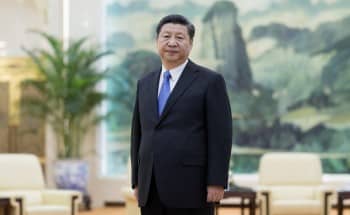
China's president Xi Jinping: A formidable statesman worthy of the challenges confronting his nation and the world.
The endeavor is so huge, it has recently been inscribed into the Chinese Constitution. It will mobilize in the coming decades and possibly century trillions of yuan and dollar-equivalent of investments, mostly from China, Russia, the other SCO countries, as well as European partners – and foremost the Beijing-based AIIB (Asian Infrastructure and Investment Bank) which has already 70 member countries, among them Australia, Canada, Western European nations and close to 20 prospective new countries; but not the United States of America.
This giant project, is of course, not without challenges. While the need for proof of “credit worthiness” by being tied to the IMF and World Bank of the eighties and nineties has since long faded into oblivion, China is still bound to the IMF and WB. – Why? – In my opinion it proves two things, The People’s Bank of China – the Chinese Central Bank – is still controlled by the FED and BIS (Bank for International Settlement, alias, central bank of all central banks), and a strong Fifth Column that doesn’t yield an inch of their power. The Chinese leadership could implement the necessary changes towards full financial sovereignty – but, why is that not happening? – Western threats and their secret services have become ever more sophisticated abduction and “neutralizing” machines over the past 70 years.
The next question is what’s the Chinese lending limit to countries who have already or will subscribe to the Belt and Road Initiative to help them repay western debt and integrate into the new eastern economic model and monetary system? The question is relevant, because China’s money supply is based on China’s economic output; unlike western currencies which are purely fiat money (hot air).
Also, how will ownership of foreign assets, i.e. infrastructure funded and perhaps built, dealt with? – Will they become Chinese property, increasing China’s capital base and flow of money? – Or would they be negotiated as long-term concessions, after which a country may repay to acquire sovereign ownership, or transfer part or all of the assets to China as a shareholder. These are relevant considerations, especially with regard to the huge B&R investments foreseen in the coming years. These decisions should be made autonomously by Chinese leadership, totally outside the influence of western monetary czars, like IMF and WB.
[dropcap]A[/dropcap]nother issue which is steadily and increasingly cropping up in the west, of course to demonize China and discourage “western civilized” (sic) countries to associate themselves with socialist China – is China’s concept of “Social Credits”. It is largely based on what the west calls a dictatorial, freedom-robbing surveillance state – with cameras and face-recognition everywhere. Of course, totally ignoring the western own Orwellian Big Brother Surveillance and lie apparatus which calls itself democracy – and in fact is a democracy for the elite of the plutocrats, gradually and by heavy propaganda brainwashing and converting what’s left of ‘democracy’ into outright fascism – we, in the west, are almost there. And this, to the detriment of the “Silent Lambs” – as per Rainer Mausfeld’s latest book, in German, “Why are Lambs Silent” (German Westend-Verlag). Yes, that’s what we have become: “Silent Lambs”.
It is too easy to demonize China for attempting to create a more harmonious, cohesive and peaceful society. Granted, this surveillance in China as in the west, demolishes to a large extent individualism, individual thinking, thereby limiting human creativeness and freedom. This is a topic which the Chinese socialist government, independent of western critique, may have to address soon to keep precisely one of the key principles of Chinese society alive – ‘social cohesiveness’ and a sense of equality and freedom.
What is the “Social Credit” system? – It is a digital footprint of everything the Chinese do, as private citizens, as corporate managers in production as well as banking, workers, food sellers, in order to basically create an ambiance of full transparency (that’s the goal – far from having been reached), so as to establish citizens’ and corporations’ “creditworthiness”, in financial terms, but also assessing crime elements, political inclinations, radicalism, to prevent potential terror acts (interestingly, in the case of most western terror acts, officials say the ‘terrorists’ were known to the police – which simply leaves you to conclude that they acted in connivance with the forces of order); and to enhance food safety in restaurants and by other food sellers.
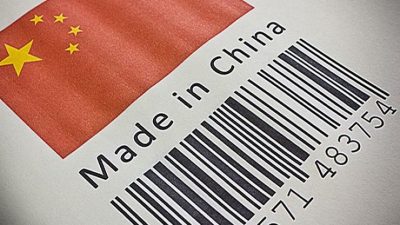 In other words, the aim is to establish corporate and individual “score cards” which will work as a rewards and punishment system, a “carrot and stick” approach. Depending on the crime or deviation from the rule, you may be reprimanded and get ‘debits’ – which you may wipe out by changing your behavior. Living under the spell of debits may limit, for example, your access to comfortable or speedy travel, better and speedier trains, air tickets, certain cultural events and more.
In other words, the aim is to establish corporate and individual “score cards” which will work as a rewards and punishment system, a “carrot and stick” approach. Depending on the crime or deviation from the rule, you may be reprimanded and get ‘debits’ – which you may wipe out by changing your behavior. Living under the spell of debits may limit, for example, your access to comfortable or speedy travel, better and speedier trains, air tickets, certain cultural events and more.
Yes, the idea of creating a stable domestic society has its drawbacks – surveillance – demolition of much of individualism, creativity, by implanting conformity. The government’s axiom is “we want a society where people don’t desire to break the rules, but the earliest stage is that they are afraid to break the rules.”
In the end, the question is, will the “Social Credits” approach to societal living, meaning a total surveillance state with every data recorded into a network of total control, be beneficial or detrimental for the Chinese goal to push ahead with her extraordinary and mostly egalitarian economic development approach, transport and industrial infrastructure, scientific research and cultural exchange – called Belt and Road, alias the New Silk Road? – Only the future will tell; but the Chinese are not alone. They have solid partners in the SCO – and long-term economic development endeavors never work in linear values, but with the unknown of dynamics to which humans are uniquely adapted to adjust.
*
Note to readers: please click the share buttons below. Forward this article to your email lists. Crosspost on your blog site, internet forums. etc.
 Pictured above: it is not a question of which side has good or bad leaders. It’s all about the difference in civilizational systems of governance.
Pictured above: it is not a question of which side has good or bad leaders. It’s all about the difference in civilizational systems of governance.

![]() The Russian Peace Threat examines Russophobia, American Exceptionalism and other urgent topics
The Russian Peace Threat examines Russophobia, American Exceptionalism and other urgent topics
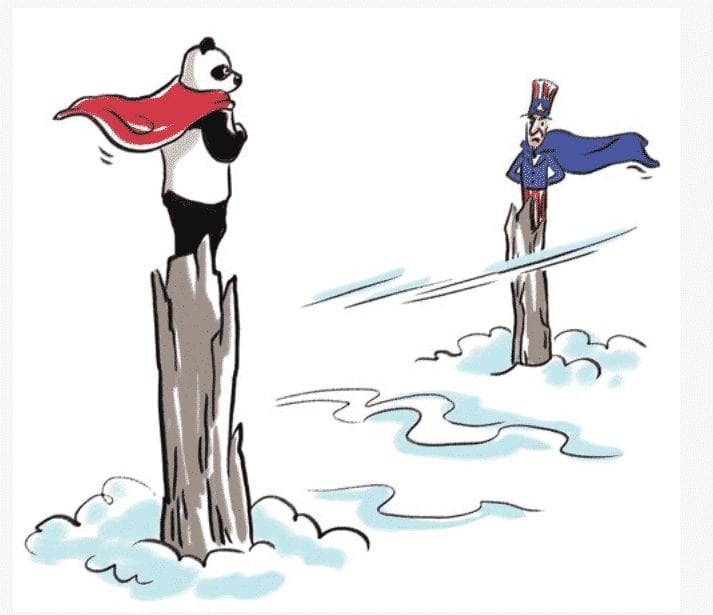











 In other words, the aim is to establish corporate and individual “score cards” which will work as a rewards and punishment system, a “carrot and stick” approach. Depending on the crime or deviation from the rule, you may be reprimanded and get ‘debits’ – which you may wipe out by changing your behavior. Living under the spell of debits may limit, for example, your access to comfortable or speedy travel, better and speedier trains, air tickets, certain cultural events and more.
In other words, the aim is to establish corporate and individual “score cards” which will work as a rewards and punishment system, a “carrot and stick” approach. Depending on the crime or deviation from the rule, you may be reprimanded and get ‘debits’ – which you may wipe out by changing your behavior. Living under the spell of debits may limit, for example, your access to comfortable or speedy travel, better and speedier trains, air tickets, certain cultural events and more.

